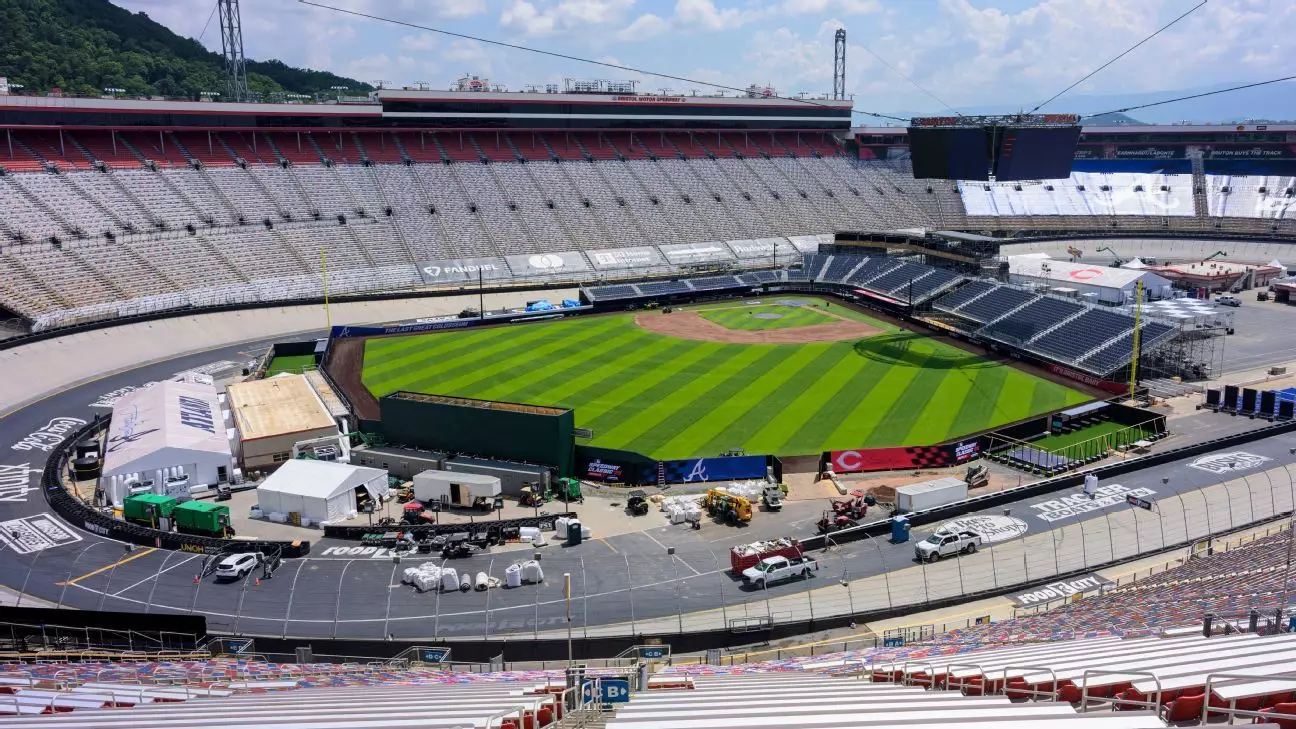Bristol Motor Speedway stands as a testament to adaptive sports architecture, seamlessly transitioning from its long-standing identity as a racing hub to hosting one of Major League Baseball’s most unique regular-season games. The delicate and complex process of converting a race track into a baseball diamond underscores the ingenuity and meticulous planning required in large-scale venue management. The logistical hurdles are formidable — from removing traditional racing infrastructure to constructing temporary, yet authentic, baseball facilities that satisfy league standards.
This transformation exemplifies a bold vision: leveraging sporting venues’ versatility to foster memorable events. However, such quick turnarounds come with inherent risks. The precision involved in laying down 17,500 tons of gravel and 340 tons of Pennsylvania clay reflects an ambitious goal: recreate a playable baseball infield that withstands professional scrutiny. This effort underscores a broader tension in sports management — balancing the spectacle of headline-grabbing events with the practical realities of infrastructure reconstruction, all within a limited timeframe. The rapid disassembly following the game emphasizes the dynamic nature of these projects, demanding not just technical expertise but also real-time logistical finesse.
The Power of Community and Sustainable Use of Resources
In a thoughtful twist, the organizers have prioritized sustainability and community support within the conversion process. Instead of discarding surplus materials like gravel, lumber, and plywood, they’ve devised ways to repurpose these resources for local recovery efforts, especially after Hurricane Helene’s damage. This initiative showcases a commendable awareness of social responsibility, demonstrating that large sporting events can extend their benefits beyond entertainment, fostering local resilience and community rebuilding.
Using these materials in Bristol’s infrastructure or to aid recovery efforts exemplifies a model of sustainable event management. It also challenges the conventional view that such reconstructions are solely about aesthetic or athletic concerns. Instead, they serve broader societal purposes, transforming a racetrack into a symbol of resilience and ingenuity. This approach not only minimizes waste but also embeds the event within the community fabric, reinforcing the idea that sports venues can double as engines of local renewal.
Navigating Uncharted Territory: A Venue of Many Firsts
Bristol’s capacity to host MLB games, and potentially other sports like hockey, signifies its evolution into a multi-sport icon. The event’s record-breaking attendance of 91,032 spectators exemplifies its capability to draw massive crowds, setting a precedent for what such venues can achieve. This positioning as a versatile sports hub signals a shift in the utilization of traditional racing tracks, transforming them into year-round entertainment complexes.
Such adaptability presents exciting possibilities but also raises questions about the long-term strategic vision. Will Bristol become a permanent multi-sport destination? Or will this be a one-off experiment driven by innovative spirit and logistical convenience? The fact that the facility can accommodate college football, baseball, and potentially hockey indicates a blueprint for future multi-use venues that maximize existing infrastructure without extensive new construction. The challenge lies in maintaining high standards across different sports, ensuring safety, and preserving the venue’s historic identity while embracing its new multifunctional role.
The Future of Bristol: Beyond Limits and Boundaries
This bold experiment demonstrates that sports venues are no longer confined to a single purpose. Bristol Motor Speedway, historically rooted in NASCAR racing, now showcases its potential as a cross-disciplinary arena. The forward-thinking approach of organizers reflects an understanding that innovation and adaptability are critical for the survival of such venues in a competitive entertainment landscape.
Moreover, the interest from the NHL illustrates that the ripple effect of this success could influence other leagues to explore unconventional venues. It positions Bristol as a testing ground for the future of multi-use arenas, where flexibility becomes a key asset. As sports leagues seek to expand their reach and engage new audiences, venues like Bristol provide a blueprint for dynamic, multi-sport hosting capabilities. This adaptability not only benefits the leagues but also invigorates local economies and sustains the venue’s relevance in a rapidly changing sports environment.
In embracing these challenges, Bristol Motor Speedway exemplifies a pioneering spirit. The facility’s capacity to reinvent itself for different sports efficiently and thoughtfully is proof that innovation in sports infrastructure must be grounded in strategic planning, community involvement, and a willingness to push boundaries. This sets a new standard for venues worldwide, emphasizing that the future of sports entertainment lies in versatility, resilience, and bold vision.


Leave a Reply